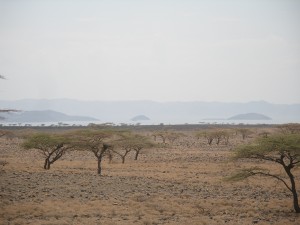
And there’s plenty of potential for wind power in that country. The United Nations Environment Programme (UNEP) estimates it could reach 3000 Megawatts (MW), which is more than double the current national demand (Kenya’s human population is 41 million people). The wind power hot spots of the country are northern districts such as Turkana and Marsabit.
One of the most outstanding developments in the region is Lake Turkana Wind Power Company (LTWC), a Dutch consortium that has leased 70,000 hectares of construction of a 380 turbine wind farm, one of the largest in the world. When completed, the Lake Turkana wind farm is estimated to generate over 20 per cent of national electricity supply, and be the cheapest source of electricity in the country. A 300 mile transmission line will connect the wind farm to the national grid.
LTWC is not the only project in the works, though. Other wind power facilities due to be in operation by late 2013 include a 300MW project in Marsabit, a 60MW farm in Kinangop, besides 350MW from various sites in Lamu Coast province.
Government is playing a key role in the development of wind energy in Kenia. It is planning to offer $8 billion in incentives for private sector investment. Alternative energy growth also has been spurred by the Scaling-Up Renewable Energy Program in Low Income Countries (SREP), which operates through the Climate Investment Fund, with financial support from bilateral partners, such as the UK Department for International Development and the Government of Netherlands. When completed, Lake Turkana wind farm will also be eligible for €7 million in carbon credit payments. All this has caused an increase of 30 per cent in the number of companies selling renewable energy devices over the last five years. Sales of household wind turbines have tripled in recent times.
You should follow us here.






1 Comment